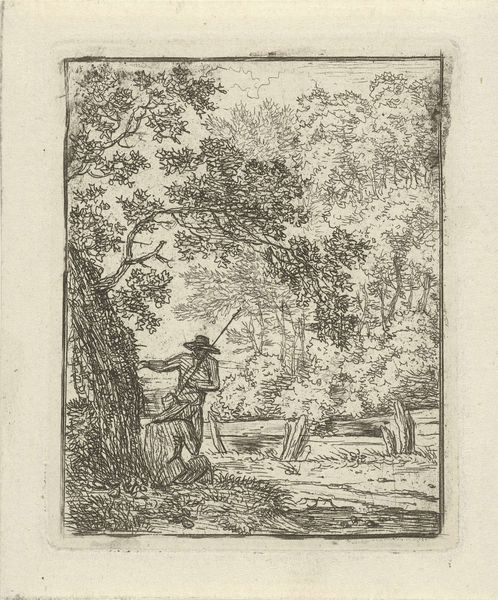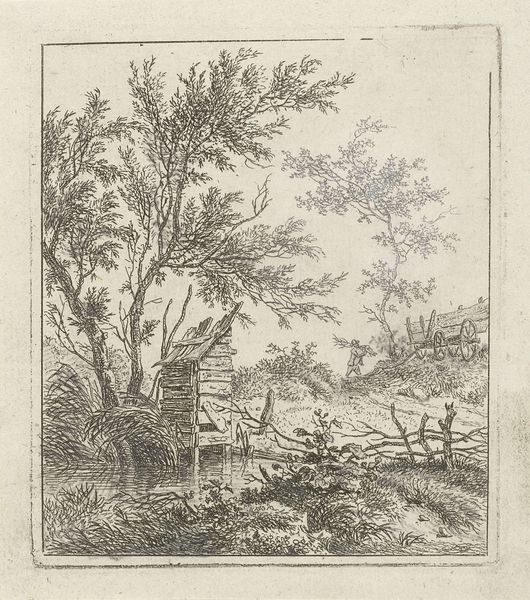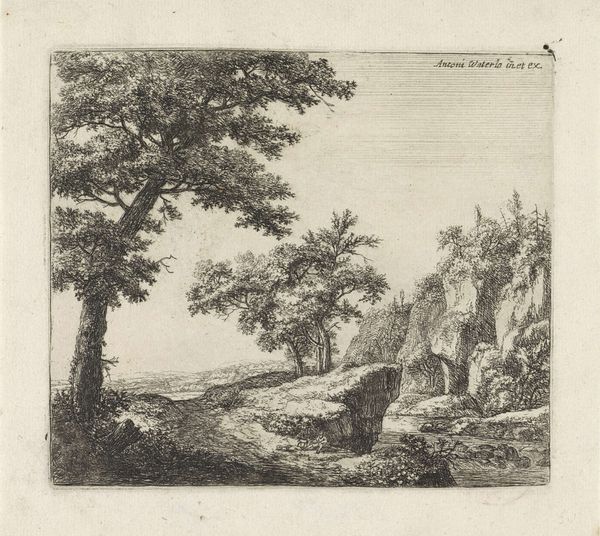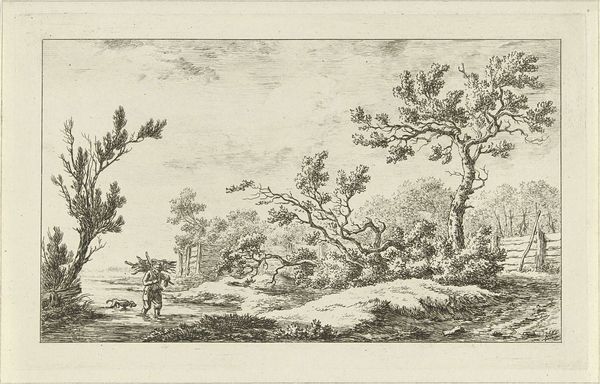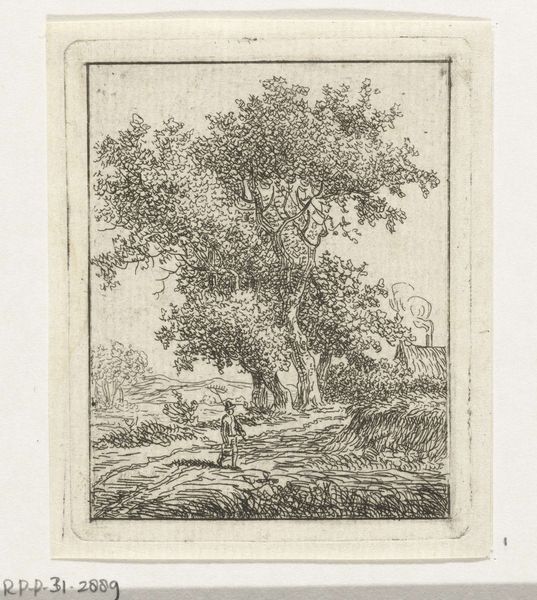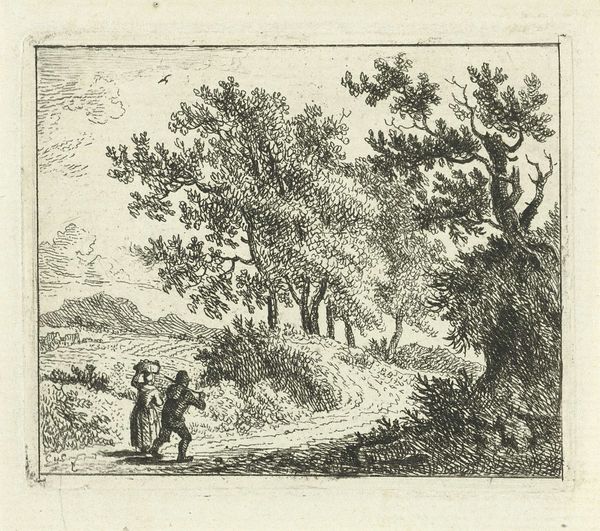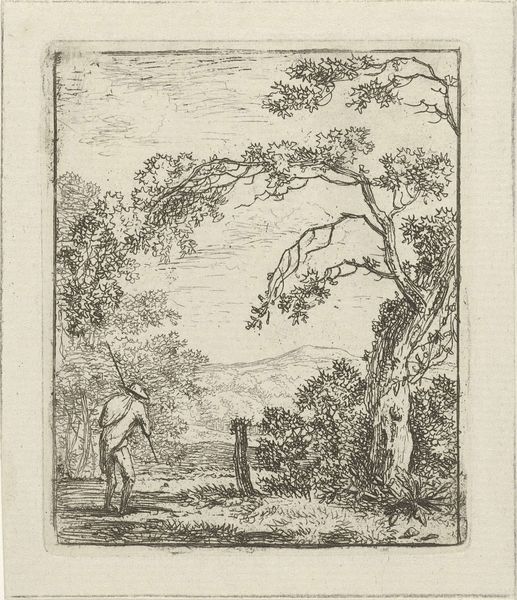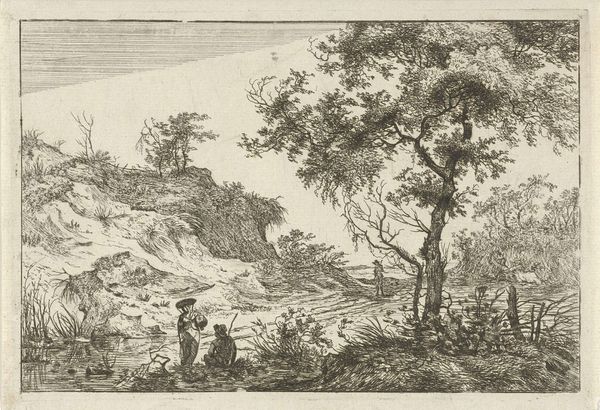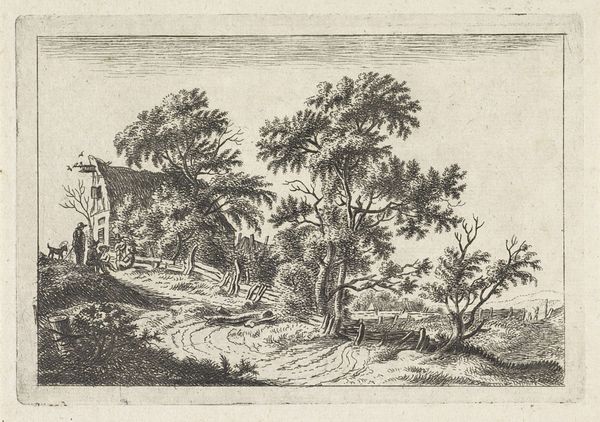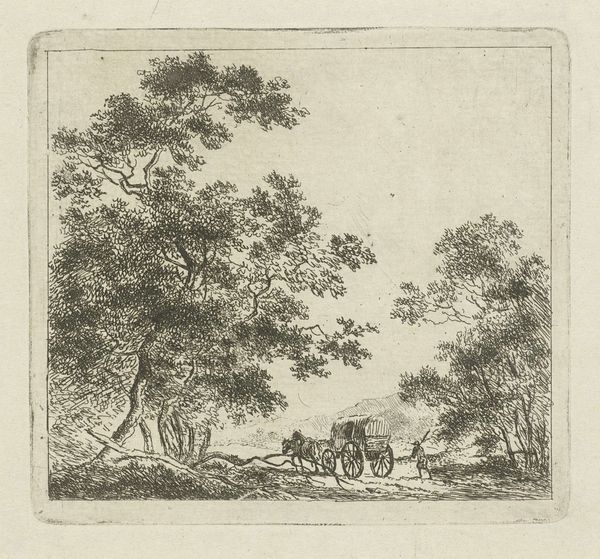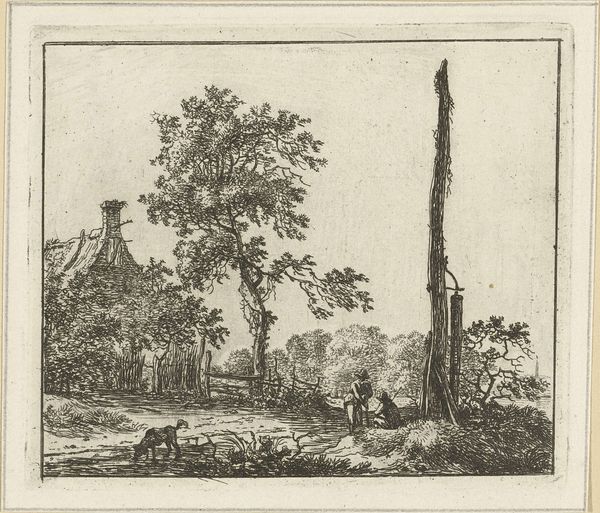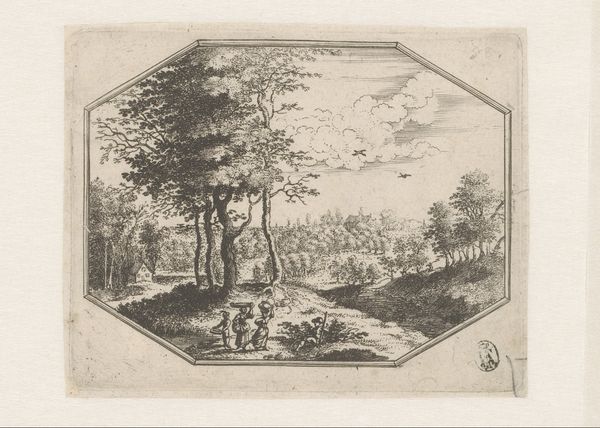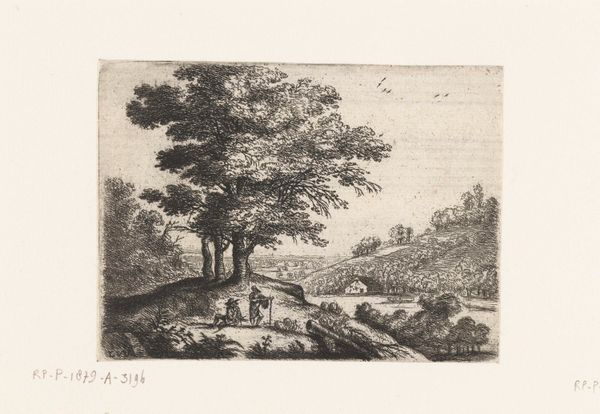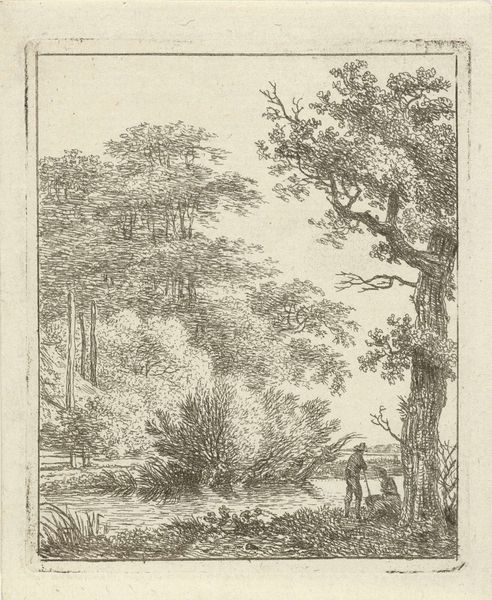
print, etching
# print
#
etching
#
landscape
#
figuration
#
romanticism
Dimensions: height 104 mm, width 120 mm
Copyright: Rijks Museum: Open Domain
Editor: This etching, "Landschap met man te voet en vrouw te paard," created by Hermanus Fock between 1781 and 1822, presents such a serene scene. There's a real stillness to it. I'm curious, what historical contexts influenced how this artwork came to be displayed and understood during its time, and perhaps even now? Curator: Well, think about the rise of Romanticism. Nature moved to the forefront as sublime, and here Fock shows figures within it. How was landscape art being utilized? Remember, too, that art often served the interests of specific groups, reflecting particular social values and hierarchies. The woman on horseback implies a certain social status, right? Do you see how that intersects with our understanding of Romanticism, not just as aesthetic appreciation, but also as a vehicle for conveying socio-political messages? Editor: Yes, that makes me think about accessibility too. Prints like these made art more accessible to a broader audience compared to original paintings hung in private collections or grand museums. Did this democratization change the perceived value of art? Curator: Exactly! Consider the social function of printmaking during that era. It facilitated wider circulation and engagement. But was this accessibility a truly egalitarian gesture? Think about the economic factors. Who could afford these prints? How were they distributed? Did they shape public opinion? Art, as we know, is enmeshed in complex power dynamics. The role of art institutions becomes key; how are such pieces displayed in museums now, and does that reinforce old power dynamics? Editor: So, by exploring the historical context, it gives even an ostensibly "simple" landscape a more multi-layered relevance. What was the purpose and function of art pieces in that era. Thanks for the perspective! Curator: And that's how historical analysis transforms our appreciation. Seeing beyond just beauty allows us to explore societal impact. It is also a reminder that we should study where art is displayed.
Comments
No comments
Be the first to comment and join the conversation on the ultimate creative platform.
